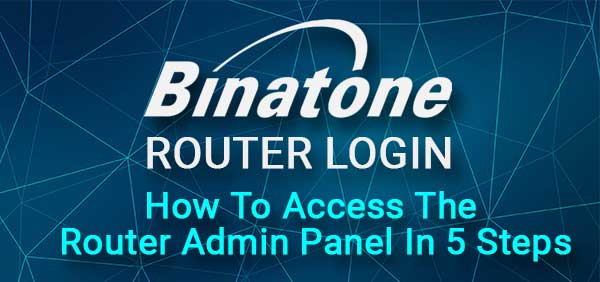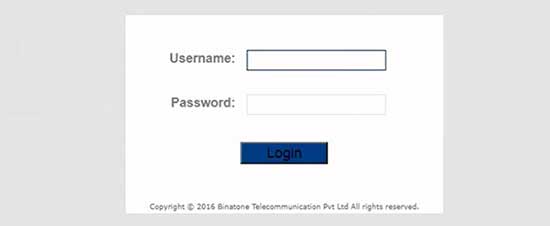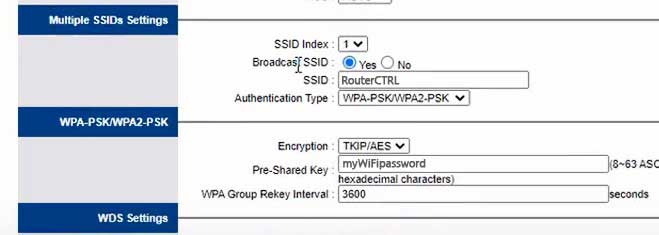When our ISP provider’s tech guy installs our router, we simply enjoy using our internet connection without thinking that there is something more our router can offer. However, our wireless router has plenty of options related to network security, Parental Controls, creating Guest networks, port forwarding and many more.
If you are using a Binatone router and want to access its settings you need to know how to login to your router first. It is a simple 5-step process anyone can do. All you have to do is to follow the steps presented below.
However, before you login to your router there are a few things you need to take care of. So, let’s begin!

CONTENTS
What You Need
The following things are essential for every attempt to access the router settings.
1. You will need a device like a computer, a smartphone or tablet.
2. You will need to connect that device to your network either using the wireless password or directly to the router with an Ethernet cable
3. You will need to have the Binatone admin login details ready. These are the router’s default IP address and the admin username and password.
When you confirm that you have these done, you can continue. The entire login process doesn’t last long and hopefully you will access the admin dashboard quickly.
Binatone Router Default Login Details
These are the default Binatone login details, but we also recommend you to check the label under the router that has these details printed on it.
Default IP address: 192.168.1.1 or 192.168.11.1
Default username: admin
Default password: admin
How To Login To Binatone Router?
Follow these steps to access the Binatone admin dashboard and start configuring your router.
STEP 1 – Check Whether Your Device Is Connected
We know we have already mentioned this, but because it’s really important, we have to point that out again. Without a connection to the network you won’t be able to proceed. The thing is that only the devices that are connected to the network where your Binatone router is can access its settings. Devices that are not connected, can’t be used for that.
So, check whether the device is connected and if it isn’t, connect it to the network. After that, you can continue.
STEP 2 – Open Google Chrome Or Any Other Browser
The next step is to open the browser you already have installed on your device. You don’t have to overthink this. You can use any browser you already have and it will do the job just fine. However it is important to have an updated version of the browser.
STEP 3 – Enter The Binatone IP In The Address Bar
Your Binatone router uses one of these IP addresses 192.168.1.1 or 192.168.11.1.

Type one of these IPs in the browser’s URL bar and when you press Enter or Go, you should be asked to enter the admin login details. If the first IP doesn’t trigger the router login page, try the second or find the router IP address by yourself. We have this guide on our website that will show you how to find the router IP on different devices and operating systems.
STEP 4 – Enter The Binatone Admin Login Details

Now you should be asked to enter the Binatone admin login username and password. A we have mentioned the username is admin, and the password is also admin. Type these in the required fields and click on the Login button below.
If these login details are correct you will be taken to the router’s admin dashboard. Also, if you know that your router login details are different, use them instead of the ones given here.
STEP 5 – Check And Manage The Binatone Router Settings Now
Right now, you have full access over your Binatone router settings. The router’s admin dashboard has all the settings organized in a way that the user doesn’t have to search too much for the settings he or she wants to change. However, if you aren’t too familiar with what you are doing it is recommended to backup the router settings first and then continue.
Consult the router manual on how to do this properly as well as about any other changes you want to make.
One of the most common reasons why people want to login to their router is to make their wireless network more personal and well-protected. The network name should be easily recognizable and the wireless password strong enough. Here is how you can find these settings on your Beetel router.
How To Change The Binatone SSID (Network name) And WiFi Password?

1. Login to your Binatone router.
2. Click on Interface Setup at the top and then on Wireless.
3. Scroll down to the Multiple SSIDs Settings and in the SSID field enter the desired network name.
4. From the Authentication Type select WPA-PSK/WPA2-PSK.
5. Now in the WPA-PSK/WPA2-PSK section select TKIP/AES as Encryption.
6. Erase the old wireless password from the Pre-Shared Key field and enter the new one.
7. Scroll down to the SAVE button and click on it to confirm that changes.
Now you can use the new wireless password to connect your devices to the new network name. If you haven’t changed the network name, but you have changed the password only, it is possible that the device will try to connect automatically using the old password. In that case, you have to forget the old wireless password on your device and then try again.
Recommended reading:
- How to Troubleshoot USB Wi-Fi Disconnecting? (An Actionable Guide)
- What Is the SSID of My Router? (Finding Your Wi-Fi Network SSID and Password)
- What is 2.4 GHz Wi-Fi? (When Should I Use 2.4 GHz Wi-Fi?)
Final Words
As you can see, the Binatone router login steps are easy to follow and you should have access to the router setting in a very short time. Customizing your wireless network is also simple and we recommend changing the WiFi password every few months. That’s why, after you access your router settings successfully, you should write down the login details and save them for the next time.
However, if you change the default username and password and you forget the custom admin login details later, there is nothing to worry about. You will be able to login again using the default username and password after you reset the router to factory default settings. The bad thing though is that in that case you will have to set up your router from scratch because all the custom settings will be erased after the factory reset.

Hey, I’m David. I’ve been working as a wireless network engineer and a network administrator for 15 years. During my studies, I also worked as an ISP field technician – that’s when I met Jeremy.
I hold a bachelor’s degree in network engineering and a master’s degree in computer science and engineering. I’m also a Cisco-certified service provider.
In my professional career, I worked for router/modem manufacturers and internet providers. I like to think that I’m good at explaining network-related issues in simple terms. That’s exactly what I’m doing on this website – I’m making simple and easy-to-follow guides on how to install, set up, and troubleshoot your networking hardware. I also review new network equipment – modems, gateways, switches, routers, extenders, mesh systems, cables, etc.
My goal is to help regular users with their everyday network issues, educate them, and make them less scared of their equipment. In my articles, you can find tips on what to look for when buying new networking hardware, and how to adjust your network settings to get the most out of your wi-fi.
Since my work is closely related to computers, servers, and other network equipment, I like to spend most of my spare time outdoors. When I want to blow off some steam, I like to ride my bike. I also love hiking and swimming. When I need to calm down and clear my mind, my go-to activity is fishing.
